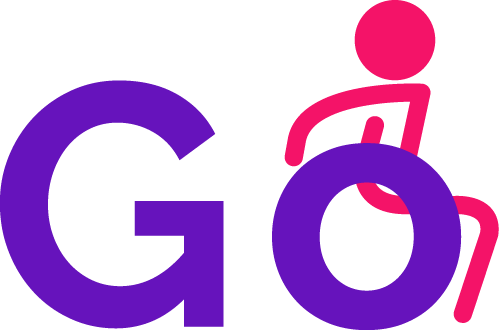Exploring the Potential of Electrical Stimulation to Restore Movement in Spinal Cord Injury Patients
Spinal cord injury (SCI) is a devastating condition that can cause paralysis and loss of sensation below the site of injury. While there is no cure for SCI, recent advances in electrical stimulation technology have opened up the possibility of restoring movement in SCI patients.
Electrical stimulation is a technique that uses electrical current to activate muscles and nerves. It has been used for decades to treat a variety of medical conditions, including chronic pain, muscle spasms, and movement disorders. In recent years, researchers have begun to explore the potential of electrical stimulation to restore movement in SCI patients.
The most promising approach is called functional electrical stimulation (FES). FES involves the use of electrodes placed on the skin to deliver electrical current to the muscles. This current activates the muscles, allowing them to contract and move. FES has been used to restore movement in SCI patients, allowing them to stand, walk, and even ride a bicycle.
In addition to FES, researchers are exploring the potential of other forms of electrical stimulation, such as epidural stimulation and transcutaneous stimulation. Epidural stimulation involves the use of electrodes placed directly on the spinal cord, while transcutaneous stimulation involves the use of electrodes placed on the skin. Both of these techniques have been used to restore movement in SCI patients, although the results have been mixed.
Overall, electrical stimulation has the potential to restore movement in SCI patients. While the results have been promising, further research is needed to determine the most effective approaches and to develop better technologies. With continued research and development, electrical stimulation may one day become a viable treatment option for SCI patients.
Examining the Benefits of Electrical Stimulation for Pain Management in Spinal Cord Injury Patients

Pain management is a critical component of care for individuals with spinal cord injury (SCI). Electrical stimulation is a promising treatment option for SCI patients who experience chronic pain. This article will discuss the benefits of electrical stimulation for pain management in SCI patients.
Electrical stimulation is a non-invasive technique that uses electrical current to stimulate nerve fibers and muscles. It is used to reduce pain, improve muscle strength, and improve range of motion. Electrical stimulation has been used to treat a variety of conditions, including chronic pain, muscle spasms, and nerve damage.
The use of electrical stimulation for pain management in SCI patients has been studied extensively. Studies have shown that electrical stimulation can reduce pain intensity and improve quality of life. Electrical stimulation has also been found to reduce the need for opioid medications, which can be addictive and have serious side effects.
In addition to reducing pain, electrical stimulation can also improve muscle strength and range of motion. Electrical stimulation can help to strengthen weakened muscles, improve coordination, and increase range of motion. This can help to improve mobility and reduce the risk of falls and other injuries.
Finally, electrical stimulation can help to reduce the risk of secondary complications associated with SCI. Electrical stimulation can help to reduce the risk of pressure sores, urinary tract infections, and other complications.
In conclusion, electrical stimulation is a promising treatment option for SCI patients who experience chronic pain. It can reduce pain intensity, improve muscle strength and range of motion, and reduce the risk of secondary complications. For these reasons, electrical stimulation should be considered as a potential treatment option for SCI patients.
Investigating the Impact of Electrical Stimulation on Quality of Life for Spinal Cord Injury Patients
Spinal cord injury (SCI) is a devastating condition that can have a profound impact on a person’s quality of life. Recent advances in medical technology have opened up the possibility of using electrical stimulation to improve the quality of life for SCI patients. This paper will explore the potential benefits of electrical stimulation for SCI patients, as well as the potential risks and limitations.
Electrical stimulation is a form of therapy that uses electrical currents to stimulate the nerves and muscles of the body. It has been used to treat a variety of conditions, including chronic pain, muscle spasms, and paralysis. In the case of SCI, electrical stimulation can be used to activate the nerves and muscles that have been damaged by the injury. This can help to improve the patient’s mobility, strength, and sensation.
The potential benefits of electrical stimulation for SCI patients are numerous. It can help to reduce pain, improve muscle strength, and improve the patient’s ability to perform daily activities. It can also help to reduce spasticity, which is a common symptom of SCI. In addition, electrical stimulation can help to improve the patient’s quality of life by increasing their independence and allowing them to participate in activities that they may not have been able to do before.
However, there are also potential risks and limitations associated with electrical stimulation. It is important to note that electrical stimulation is not a cure for SCI, and it may not be effective for all patients. In addition, there is a risk of skin irritation or burns if the stimulation is not properly administered. Finally, electrical stimulation can be expensive and may not be covered by insurance.
In conclusion, electrical stimulation has the potential to improve the quality of life for SCI patients. However, it is important to consider the potential risks and limitations before beginning treatment. It is also important to discuss the potential benefits and risks with a qualified medical professional before beginning any form of electrical stimulation therapy.


